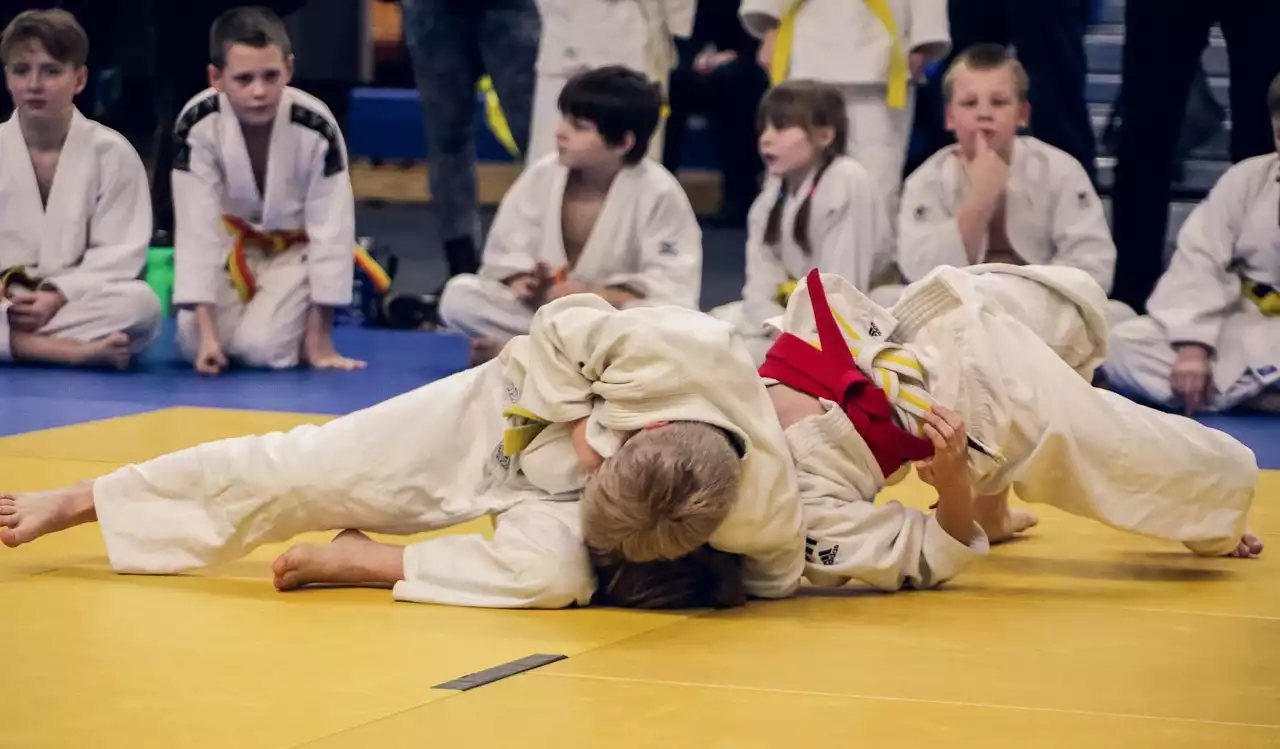Benefits of learning Jujitsu Throws
Jujitsu throws can provide a wide range of benefits to practitioners, both physically and mentally. First and foremost, throws can be an effective way to take down an opponent and gain control of a fight. Throws can be used to bring an opponent to the ground, where you can either submit them or gain a dominant position. Additionally, practicing jujitsu throws can help you to develop better balance, coordination, and body control.
Throwing an opponent requires you to use your entire body, which means that you'll be engaging your core, legs, and arms. This full-body workout can help to build strength and stamina, as well as improve overall fitness. Practicing throws can also be a great way to relieve stress and improve mental focus. When you're focused on executing a throw, you'll be fully engaged in the moment, which can help to clear your mind and alleviate anxiety.
Types of Jujitsu Throws
Jujitsu throws can be broadly categorized into two main types: hip throws and foot sweeps. Hip throws involve using your hips to generate force and momentum, which allows you to throw your opponent over your hip and onto the ground. Foot sweeps, on the other hand, involve sweeping your opponent's legs out from under them, causing them to fall to the ground.
Within these two categories, there are many different types of throws that you can learn and practice. Some common hip throws include O Goshi (major hip throw), Harai Goshi (sweeping hip throw), and Uki Goshi (floating hip throw). Foot sweeps include De Ashi Barai (advanced foot sweep), Okuri Ashi Barai (sliding foot sweep), and Ko Uchi Gari (minor inner reap). Each throw requires different techniques and strategies to execute properly, so it's important to learn and practice a variety of throws to become a well-rounded jujitsu practitioner.
The Importance of Proper Form and Technique
When it comes to executing jujitsu throws, proper form and technique are essential. Without proper form, you risk injuring yourself or your partner, and you will likely not be able to execute the throw effectively. One of the most important aspects of proper form is maintaining good posture and balance throughout the throw. This means keeping your back straight, your core engaged, and your weight centered over your feet.
Another important aspect of proper form is maintaining a strong grip on your opponent. Without a strong grip, your opponent can easily slip out of the throw or counterattack. You should also be mindful of your footwork and body positioning, as these can greatly impact the effectiveness of the throw. Practicing proper form and technique is essential to executing jujitsu throws safely and effectively.
Tips for Executing Jujitsu Throws Safely
Safety should always be a top priority when practicing jujitsu throws. To ensure that you are executing throws safely, there are a few tips to keep in mind. First and foremost, always practice throws with a partner who is of similar size and skill level. This will help to minimize the risk of injury and ensure that both you and your partner are comfortable with the techniques being used.
It's also important to start with basic throws and gradually work your way up to more advanced techniques. This will allow you to develop the proper form and technique needed to execute throws safely and effectively. Additionally, always warm up thoroughly before practicing throws, and be sure to stretch your muscles to prevent injury.
Common Mistakes to Avoid When Performing Jujitsu Throws
There are a few common mistakes that beginners often make when practicing jujitsu throws. One of the most common mistakes is failing to maintain good posture and balance throughout the throw. Without good posture, you risk injuring yourself or your partner, and the throw will likely not be effective.
Another common mistake is failing to grip your opponent properly. Without a strong grip, your opponent can easily slip out of the throw or counterattack. Additionally, beginners often try to use too much force when executing throws, which can also lead to injury. It's important to remember that throws rely on leverage and technique, not brute strength.
Drills and Exercises for Improving Jujitsu Throws
To improve your jujitsu throws, there are a variety of drills and exercises that you can incorporate into your training. One effective drill is to practice throws against a wall or padded surface. This will help you to develop the proper form and technique needed to execute throws effectively.
You can also practice throws with a partner, starting with basic throws and gradually working your way up to more advanced techniques. Additionally, incorporating strength and conditioning exercises into your training can help you to develop the physical strength and stamina needed to execute throws effectively.
How to Incorporate Jujitsu Throws into Your Training
To incorporate jujitsu throws into your training, it's important to start with basic techniques and gradually work your way up to more advanced throws. Begin by practicing throws with a partner, focusing on proper form and technique.
As you become more comfortable with basic throws, you can start to incorporate more advanced techniques into your training. Additionally, practicing throws against a wall or padded surface can be an effective way to develop the proper form and technique needed to execute throws effectively.
Jujitsu Throws in Self-Defense Situations
While jujitsu throws are often used in competitive settings, they can also be highly effective in self-defense situations. If you find yourself in a situation where you need to defend yourself, knowing how to execute throws can be a valuable tool.
When using throws in self-defense situations, it's important to remain calm and focused. Use your opponent's momentum against them, and be sure to maintain good posture and balance throughout the throw. Additionally, always be aware of your surroundings and be prepared to defend yourself if necessary.










